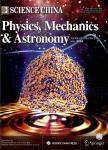Revisiting the breakdown of Stokes-Einstein relation in glassforming liquids with machine learning
Revisiting the breakdown of Stokes-Einstein relation in glass-forming liquids with machine learning作者机构:School of Systems ScienceBeijing Normal UniversityBejing 100875China International Center for Quantum Materials and School of PhysicsPeking UniversityBeijing 100871China
出 版 物:《Science China(Physics,Mechanics & Astronomy)》 (中国科学:物理学、力学、天文学(英文版))
年 卷 期:2020年第63卷第7期
页 面:63-67页
核心收录:
学科分类:08[工学] 0805[工学-材料科学与工程(可授工学、理学学位)] 080502[工学-材料学]
基 金:the National Natural Science Foundation of China(Grant Nos.11804027,and 11525520) the National Basic Research Program of China(Grant No.2015CB856801) the Fundamental Research Funds for the Central Universities(Grant No.2018NTST24)
主 题:metallic glass-forming liquid machine learning Stokes-Einstein relation
摘 要:The Stokes-Einstein(SE) relation has been considered as one of the hallmarks of dynamics in liquids. It describes that the diffusion constant D is proportional to(τ/T)–1, where τ is the structural relaxation time and T is the temperature. In many glassforming liquids, the breakdown of SE relation often occurred when the dynamics of the liquids becomes glassy, and its origin is still debated among many scientists. Using molecular dynamics simulations and support-vector machine method, it is found that the scaling between diffusion and relaxation fails when the total population of solid-like clusters shrinks at the maximal rate with decreasing temperature, which implies a dramatic unification of clusters into an extensive dominant one occurs at the time of breakdown of the SE relation. Our data leads to an interpretation that the SE violation in metallic glass-forming liquids can be attributed to a specific change in the atomic structures.



